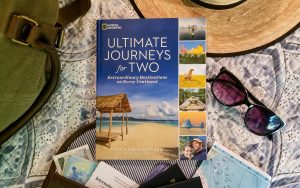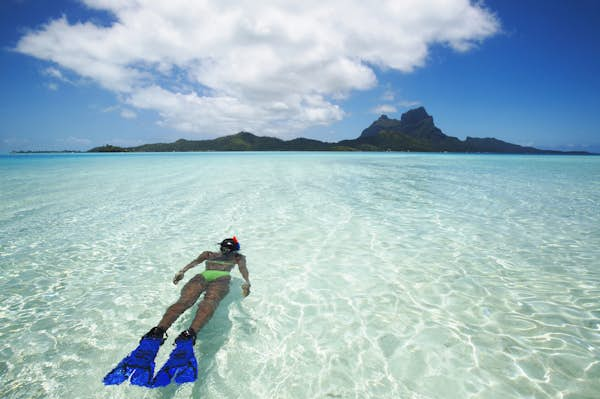
You don’t have to be a certified diver to come face-to-face with some of the sea’s most fascinating creatures. In fact, in some destinations, you can simply wade from the sand into the shallows with your mask and snorkel and enjoy some incredible marine life encounters.
From swimming with manta rays in Australia to spying on whale sharks in Mozambique, these are seven of the best places in the world to snorkel.
 The Fernando de Noronha archipelago has some incredible snorkeling © Paulo Imamura / EyeEm / Getty Images
The Fernando de Noronha archipelago has some incredible snorkeling © Paulo Imamura / EyeEm / Getty Images
1. Fernando de Noronha, Brazil
A volcanic archipelago off Brazil’s northeast coast, Fernando de Noronha is a fiercely protected eco-wonderland, favored by naturalists and marine biologists, with a rugged coastline and diverse ecosystems.
It’s renowned for its undeveloped beaches and unparalleled snorkeling. With visibility reaching up to 40m in its warm, emerald waters, you can spot sea turtles, rays, lemon and reef sharks. The beach also has the highest concentration of resident spinning dolphins in the world.
At Baía do Sancho, considered by many to be the most beautiful beach in Brazil, the sandy seafloor allows boats to stop without damaging the coral. Other good snorkeling points include Baía dos Porcos, Sueste, Morro de Fora, and Porto, with its accessible shipwrecks teeming with marine life.
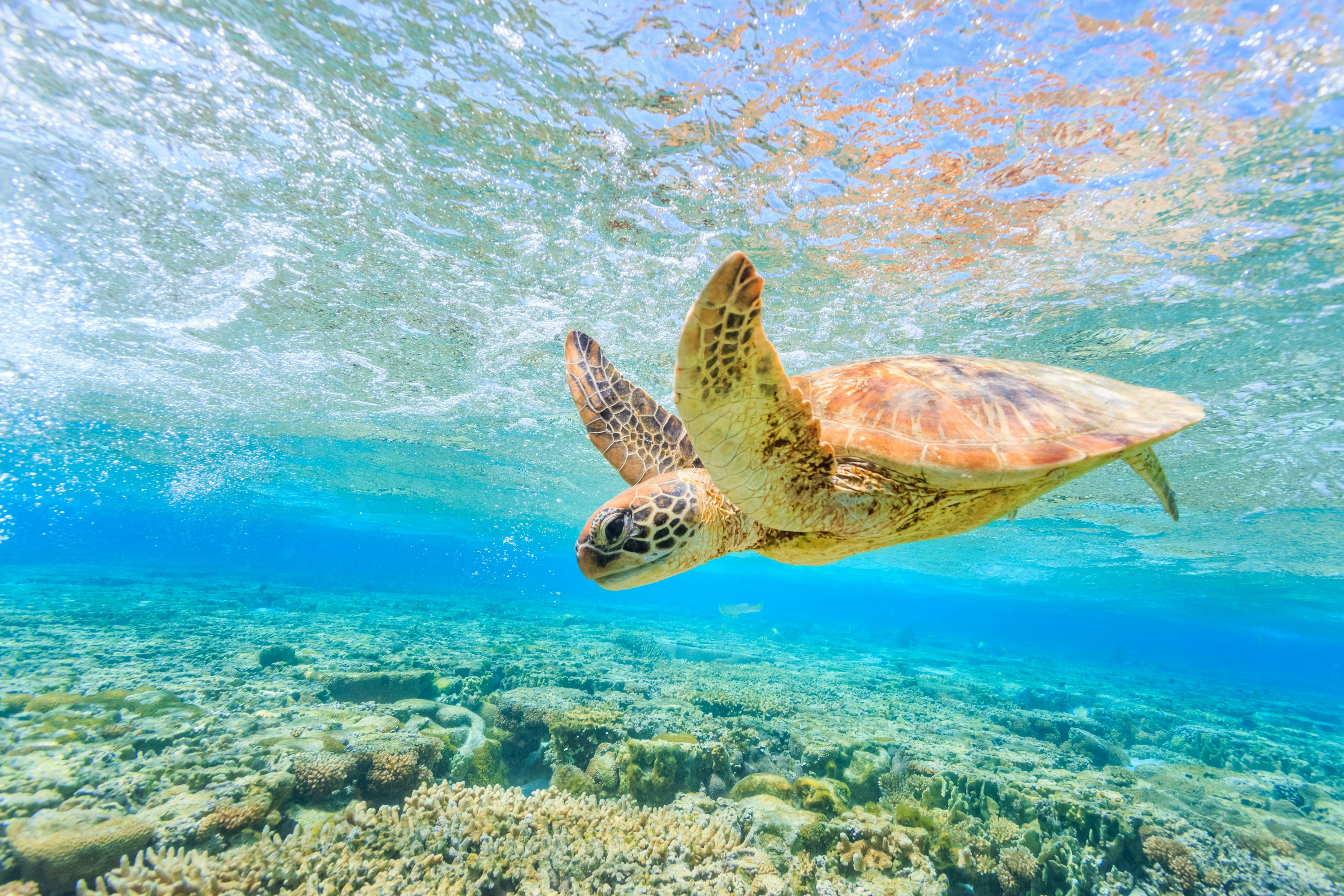 Lady Elliot Island offers some of the best snorkeling in Australia © Michael Smith ITWP / Shutterstock
Lady Elliot Island offers some of the best snorkeling in Australia © Michael Smith ITWP / Shutterstock
2. Lady Elliot Island, Great Barrier Reef, Australia
The Great Barrier Reef’s southernmost coral cay, Lady Elliot Island offers some of the best snorkeling in Australia and is best known for its manta rays, nesting sea turtles, and eco-credentials.
Explore a seabed of coral gardens and abundant marine life, including giant manta rays, barracudas and leopard sharks. The shallow lagoon fringing the eastern side of the island is best for families and beginners, while the coral gardens on the western side have deeper waters ideal for the more seasoned snorkeller.
Sitting in one of the Great Barrier Reef’s ‘Green Zones,’ a ‘no-take’ area where destructive behavior is prohibited, Lady Elliot Island enjoys the highest level of environmental protection. That’s one of the reasons the humpback whales that migrate through these waters between June and October keep returning, too.
Discover the world’s most intriguing experiences with our weekly newsletter delivered straight to your inbox.  Arrive early to beat the crowds of snorkellers in Hanauma Bay, Hawaii © Peter Amend / Getty Images
Arrive early to beat the crowds of snorkellers in Hanauma Bay, Hawaii © Peter Amend / Getty Images
3. Hanauma Bay, Oahu, Hawaii
Nestled in an ancient volcano crater, backed by palm trees and home to a 7000-year-old coral reef, Hanauma Bay is one of the most scenic and popular snorkeling spots in Hawaii.
Arrive early to beat the crowds, then don your snorkeling gear and wade right into the calm, shallow waters: hundreds of neon-colored species of fish, corals, eels and sea turtles await not far from the dreamy white-sand beach. Beyond the reef, you can also explore crevices and caves teeming with yet more sea life.
The bay is part of a nature preserve and marine life conservation area. It’s closed on Mondays and Tuesdays to minimize the impact on the ecosystem, and a maximum of 3000 visitors are allowed on any given day. There is a fee to enter, and visitors must reserve ahead.
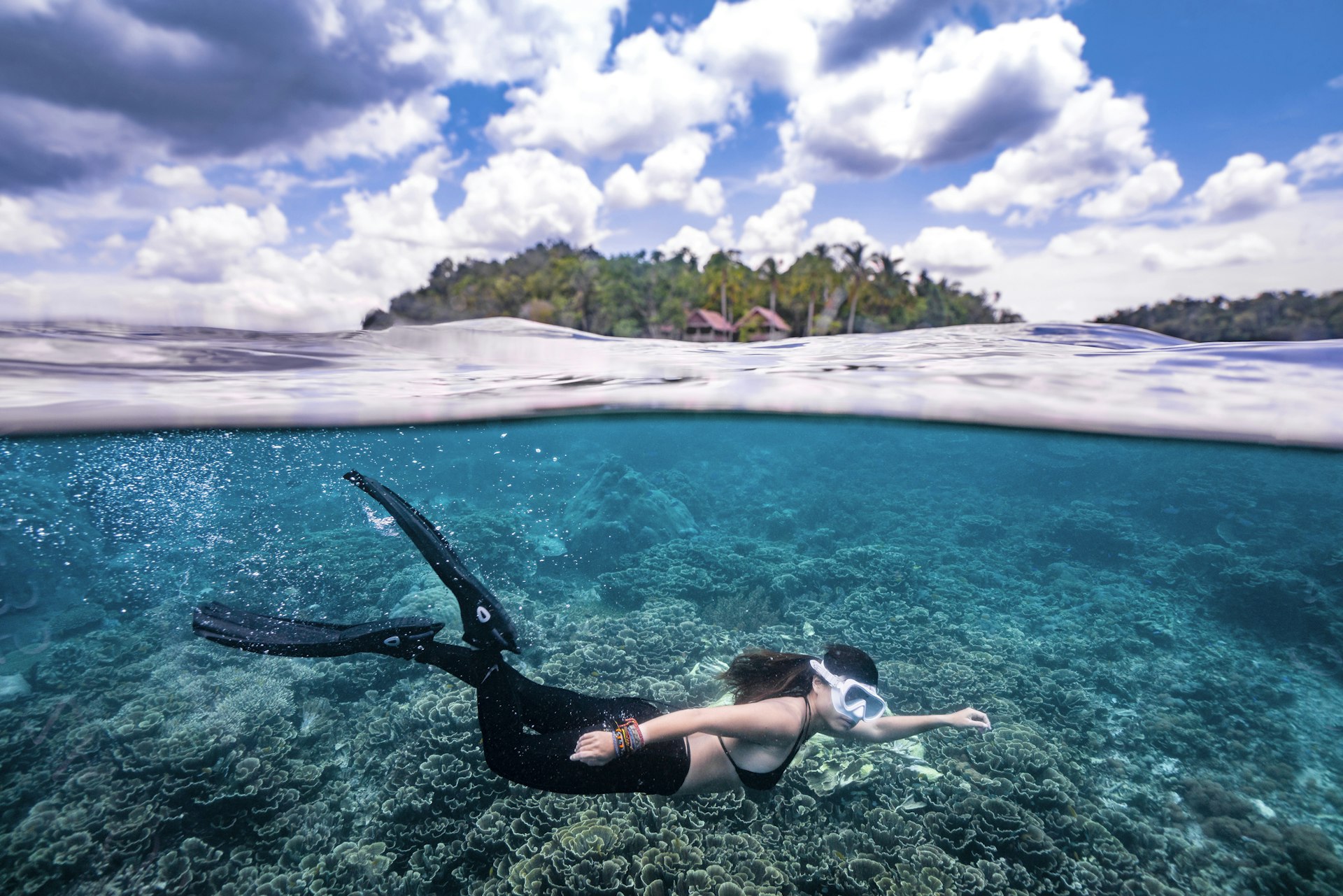 Raja Ampat is paradise both above and below the water © Khaichuin Sim / Getty Images
Raja Ampat is paradise both above and below the water © Khaichuin Sim / Getty Images
4. Raja Ampat Islands, Indonesia
Southeast Asia abounds with spectacular diving and snorkeling spots, and Indonesia’s Raja Ampat arguably tops the all-star list with its fine white-sand beaches, hidden lagoons and impressive diversity of marine life and coral reef systems.
The quantity and variety of marine life here are so astounding, in fact, that scientists have described Raja Ampat as a biological hotspot. They believe its reef systems restock reefs throughout the South Pacific and Indian Oceans.
Armed with your mask, snorkel and fins, you’ll have free rein to explore Raja Ampat’s blue-water mangroves and a marine area that boasts over a thousand species of reef fish, hundreds of species of coral reef, several types of sea turtles and majestic manta rays.
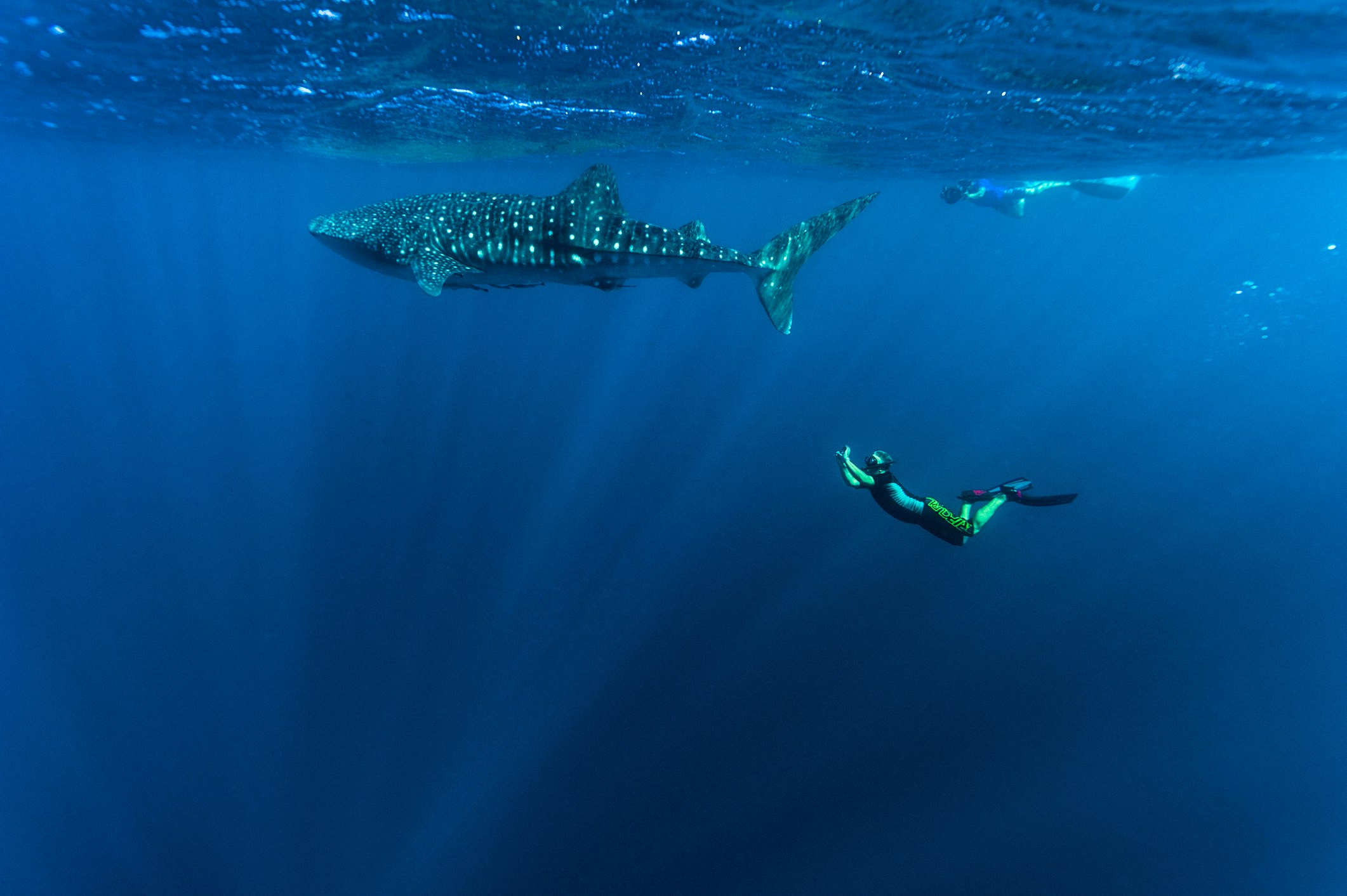 The snorkeling is magnifique in Mozambique © Jason Edwards / Getty Images
The snorkeling is magnifique in Mozambique © Jason Edwards / Getty Images
5. Tofo Beach, Inhambane, Mozambique
The southeast African country of Mozambique offers plenty of superb snorkeling spots along its pristine Indian Ocean coastline. Here, warm turquoise waters, which lap dune-fringed beaches, abound with shoals of colorful fish and well-preserved corals.
The waters off Tofo Beach, in the southern province of Inhambane, are particularly rich in marine biodiversity and most famous for their large whale shark population. It’s one of the few places on the planet where gentle whale sharks can be found year-round.
Manta rays also grace these waters, along with sea turtles and dolphins. Add in the fact humpback whales stop by between June and October, and you’ll be adding Mozambique to your snorkel bucket list.
 Spot lionfish in the clear waters off Roatan Island © John A. Anderson / Getty Images
Spot lionfish in the clear waters off Roatan Island © John A. Anderson / Getty Images
6. West Bay and Mary’s Place, Roatán Island, Honduras
Roatán is the largest and most developed of the Honduran Bay Islands and one of the best places to snorkel in the Caribbean. Fringed by an incredibly diverse coral reef rich in tropical fish, the island is a diving and snorkeling paradise.
Head to the pristine white-sand beach of West Bay to spot parrotfish, butterflyfish and angelfish just off the shore, or venture south to Mary’s Place, a diving site that revolves around a huge crevice where sea turtles, eagle rays and groupers often come up to the surface.
 Dugongs are present in the waters around Marsa Alam in Egypt © cinoby / Getty Images
Dugongs are present in the waters around Marsa Alam in Egypt © cinoby / Getty Images
7. Abu Dabbab Bay, Marsa Alam, Egypt
Marsa Alam in southern Egypt is one of the few places in the world to spot the elusive dugong, a rare, lesser-known cousin of the manatee that’s long inspired mermaid myths and legends across cultures.
In Abu Dabbab, the shallow waters, protective reefs and abundant seagrass attract and sustain a small population of dugongs – affectionately dubbed ‘sea cows’ because of their grass-eating habits.
Other residents of the bay that can be found around the well-preserved coral reefs include giant sea turtles, parrotfish, angelfish, barracudas and seahorses, while the sandy seafloor is also home to stingrays.
The world’s most colorful coral reefs
Some golden rules for responsible snorkeling:
- Never touch (with your hands or feet) corals or sea creatures.
- Show respect to marine life and keep your distance at all times.
- Avoid crowds – no turtle wants to be surrounded by 10 leering humans; the snorkeler who swims away from the crowd is the snorkeler who sees things no one else in the group does.
- Choose reef-friendly sunscreen (which can sometimes be trickier than it sounds) or, more simply, wear rash vests or skinsuits to avoid sunburn.
- Pick responsible and ethical boat operators when embarking on snorkeling tours.
- Avoid using plastic when you travel as much as possible.
- Consider volunteering for local beach cleans to help keep reefs healthy.
- Be safe, watch for currents and, if you’re not a strong swimmer, don’t venture out of your depth.


